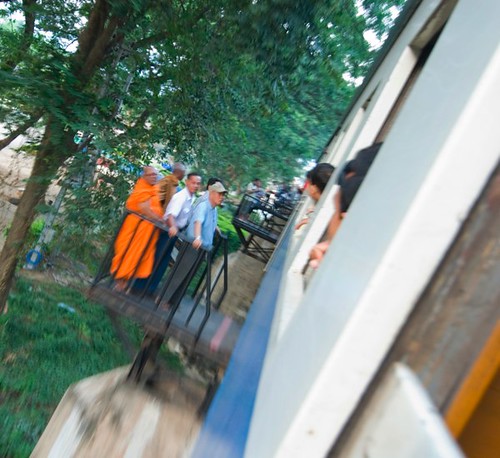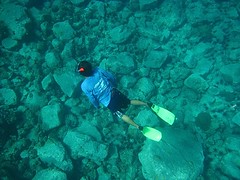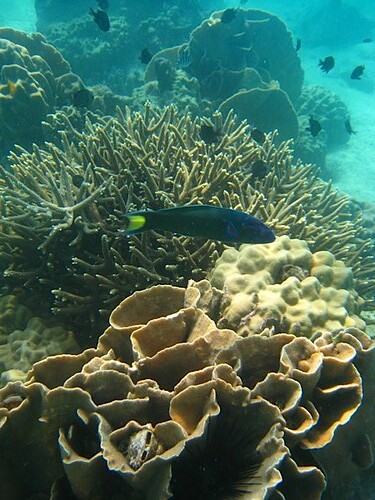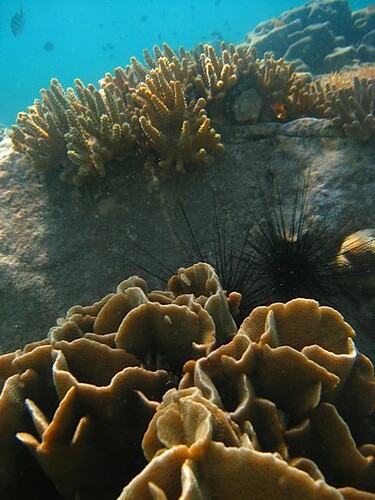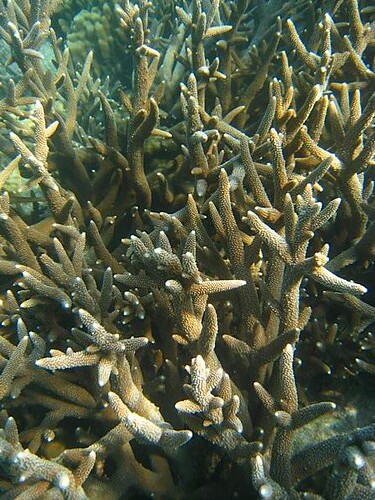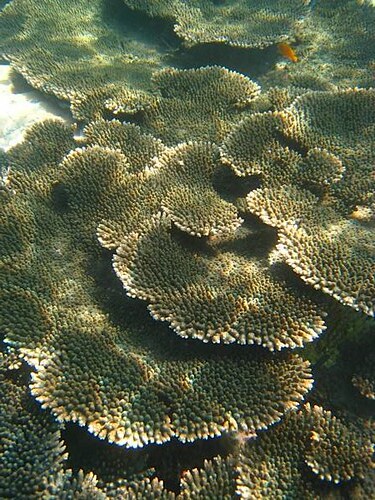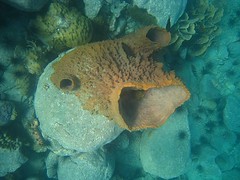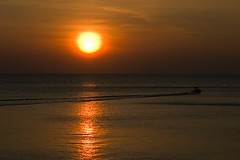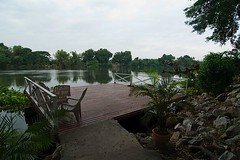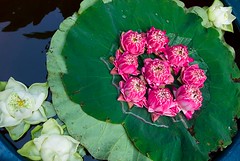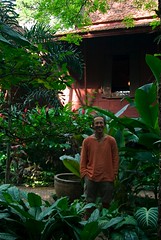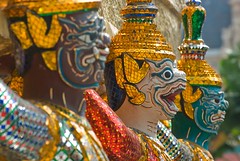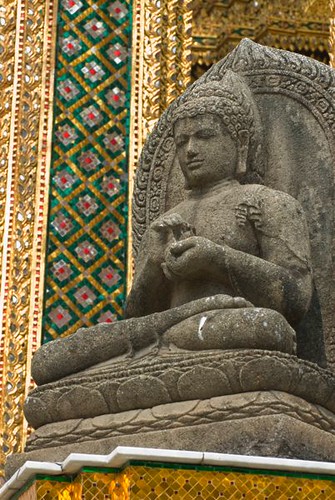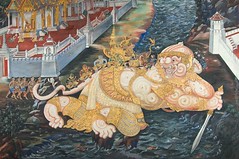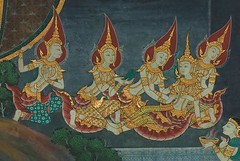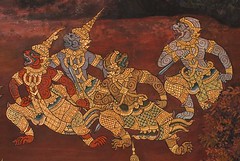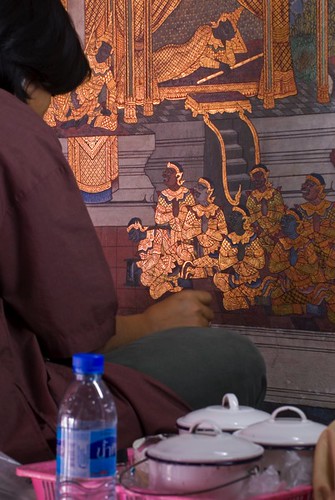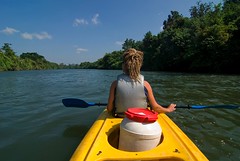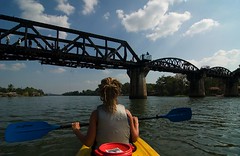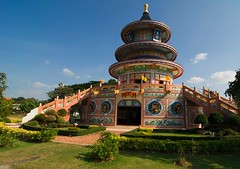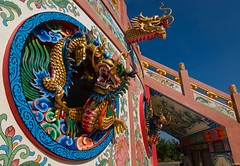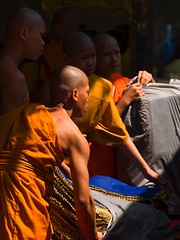Through the Thai mountains across the Bridge of Sighs. Bridge Over the River Kwai
Bridge Over the River KwaiOne of the biggest draws for visitors to Kanchanaburi is the Bridge Over the River Kwai. This World War 2 railway bridge, built in Thailand by tens of thousands of Asian workers and Allied POWs under Japanese control, has become symbolic of the cruel treatment of prisoners in the 1940s. Thousands died during the railway’s construction. It is the British war film starring Alec Guinness, which has perhaps transported the bridge to this height. The film is an icon of the British stiff-upper-lip and courage in the face of appalling odds. Bizarrely a Frenchman wrote the novel that the film is based on.
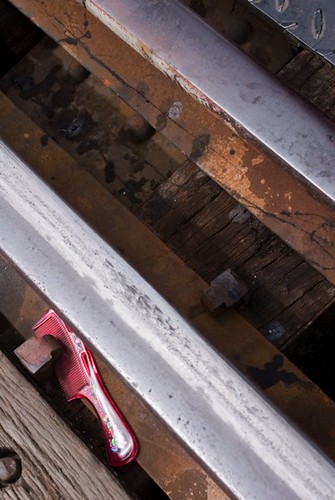
The bridge is a somewhat small piece of engineering to carry such a heavy historical load. The building of the Death Railway, or Thailand-Burma Railway, as it is known is encapsulated in seven iron girder spans, each a little taller than head height. It lives up to the weighty expectations placed on its sturdy concrete pillars, ensuring that the history is not forgotten while those with memories of the events fade away.
The Bridge is just one small part of the railway that runs through more than 400km of hazardous mountain jungle. According to contemporary accounts it was a relatively easy part of the construction project. Easy here is certainly relative. The easy part compares to most people’s idea of immense suffering with the ever-present threat of beatings, diseases, malnutrition and death. The rest of the railway line got harder the further into the mountains it went. Today, you can still travel as far as Nam Tok, about 60km into the hills, and in doing so cross original wooden trestles holding the line onto the side of a vertical cliff above the river. This is the main photo opportunity for tourists riding the line.
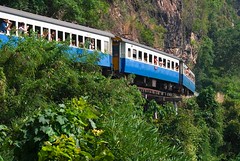 Wooden trestles still survive to hold the railway line on to the side of a cliff above the River Kwai
Wooden trestles still survive to hold the railway line on to the side of a cliff above the River Kwai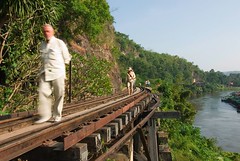
The Railway was built by the Imperial Japanese Army to create a land route from Thailand to Burma, the two countries being separated by a high mountain range. The sea route around the Malay Peninsula was prone to attacks by Allied battleships. They knew it would be a difficult feat of engineering because of the inaccessible terrain. This prohibited the use of heavy machinery resulting in the line being built totally by hand – picks, shovels and dynamite. All materials were carried in by foot and mule until the track began to be laid at the working railhead could be reached via the track.
 Riding the Line
Riding the LineWhile the Bridge is the main ‘attraction’, you can’t move far in Kanchanaburi without coming across evidence and memories of the suffering endured by slave workers on the Death Railway. As well as the bridge and railway line, there are two large Allied War Cemeteries, the excellent interpretation of the Thailand-Burma Railway Centre, the JEATH War Museum which was commissioned by the Abbot of the Buddhist monastery in which it stands and features reconstructions of bamboo prison huts hosting a photographic exhibition, and a memorial erected to the dead by the Japanese in 1944.
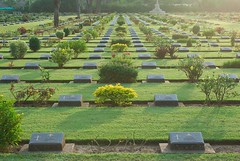 Chungkai Allied War Cemetery
Chungkai Allied War Cemetery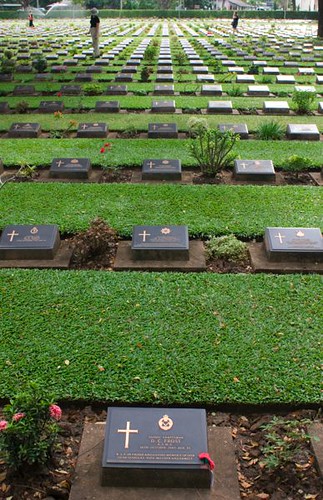 Kanchanaburi Allied War Cemetery
Kanchanaburi Allied War CemeteryEstimates put the total number of deaths of slave workforce at about 100,00, most of who were Asian workers lured to the line by lies of paid jobs, and about 16,000 allied POWs. The all-powerful advancing Japanese Army had captured most of the POWs during their rapid onslaught in Singapore, Malaysia and Indonesia. By far the most POWs came from Britain, taken prisoner soon after arriving in Singapore when it inevitably fell to the Japanese. Large numbers of Dutch were captured in Indonesia. The deaths of so many of these captives building the railway have become one of the most enduring stories of World War 2.

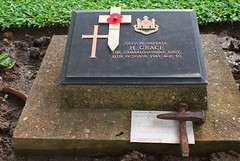
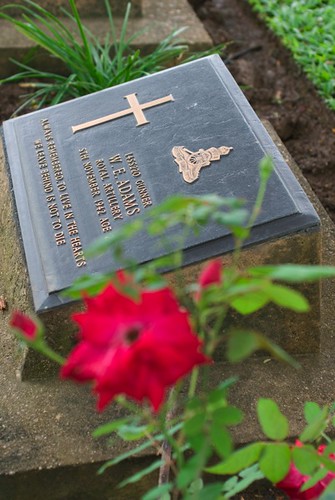
Some of the most touching moments of visiting places associated with the railway include seeing the blank eyes of POWs stare out from black and white photos, their shrunken bodies displaying ribs. Walking around the cemeteries you are struck by the ages of the men who died, so many in their early 20s, and the way that deaths cluster on certain runs of days, presumably when conditions or work rate became extremely terrible. One story that lodges in the heart is of the man who’s father survived years of captivity to return home, conceive two children then die of aggressive hypertension. The bravery of doctors who treat sick men with primitive equipment made from borrowed and improvised materials and almost no drugs comes to the fore again and again.

These stories of brutality, suffering and of the personal strength of those who tried to live through are mere glimpses into a past of unimaginable terror and courage. They still draw thousands of relatives of these men to Thailand every year, while the number of survivors themselves dwindles.
